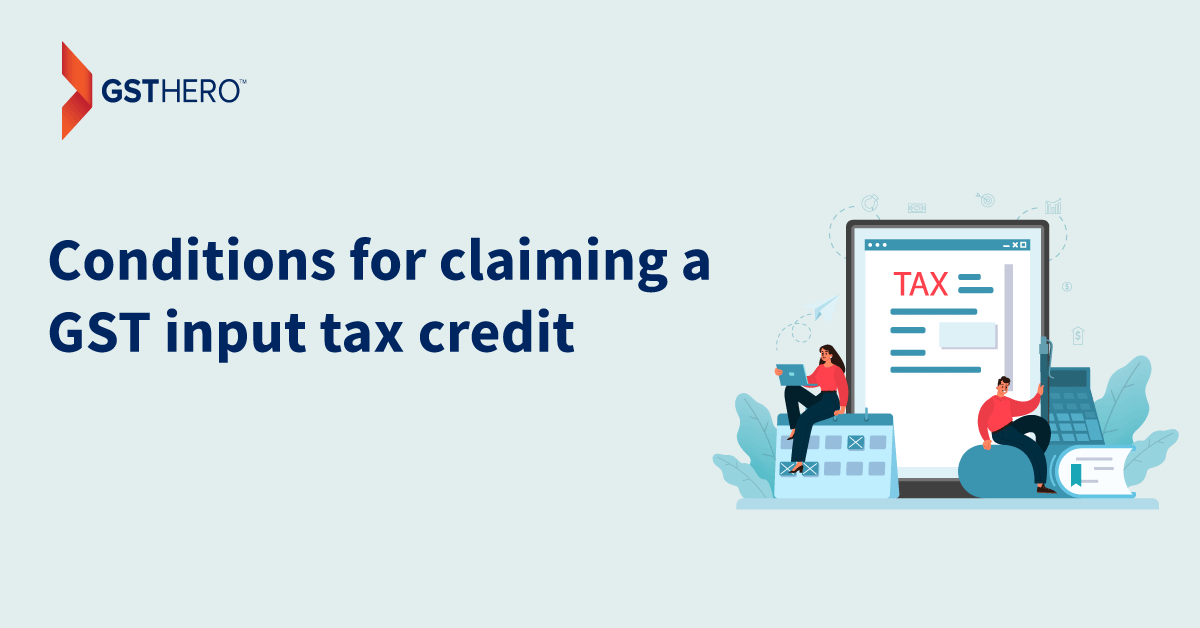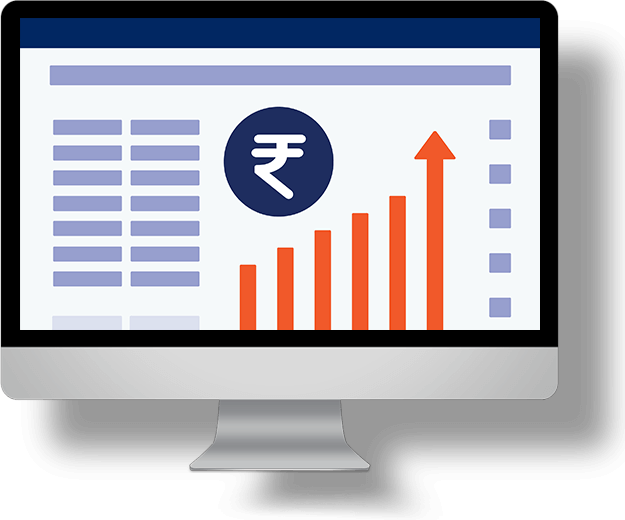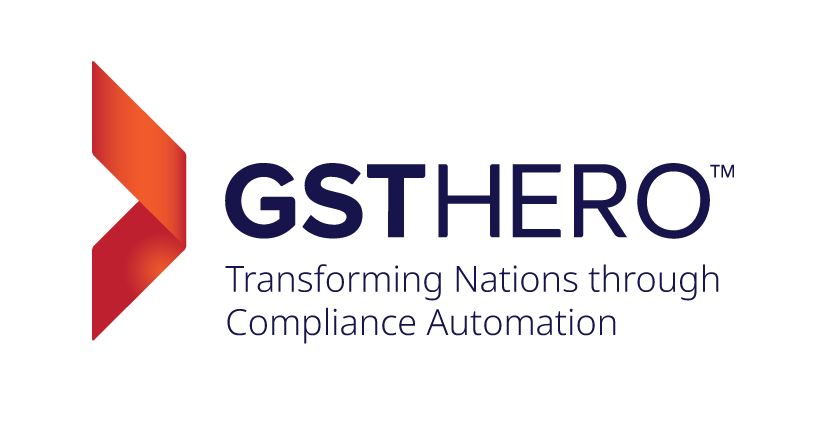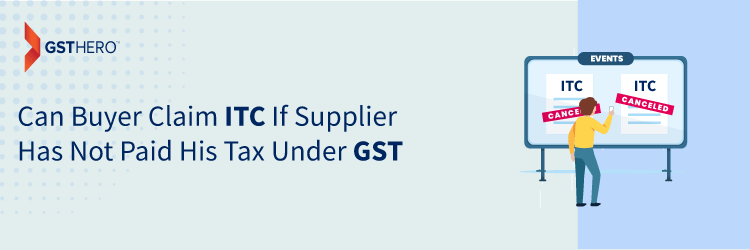Claiming the correct amount of Input Tax credit is vital to the Goods and Services Tax regime. In simple terms, the ITC claim under GST subtracts the tax paid on inputs from the tax due on output. Section 16 of the CGST Act, 2017 expressly lists the various conditions the buyer of goods must meet to claim Input Tax Credit.
This article will summarise the relevant sections and rules to help us understand the buyer's right to claim ITC under GST when the seller has not deposited the required tax.
Section 16 subsection 2 of the CGST Act states: Regardless of anything else in this section, no registered person shall be entitled to an claim ITC in GST in respect of any supply of goods or services or both to him unless he possesses a tax invoice or debit note issued by a supplier registered under this Act, or such other tax paying documents as may be prescribed; he has received the goods or services or both;
Explanation.- For this clause, the registered person is deemed to have received the goods if the goods are delivered by the supplier to a recipient or any other person on the registered person's direction, whether acting as an agent or otherwise, before or during the movement of goods.
Budget update 2022
- It cannot be claimed if ITC is restricted in GSTR-2B, available under Section 38.
- The deadline for ITC claim under GST on invoices or debit notes issued during the financial year is moved to the earlier of two dates. First, November 30 of the following year, or the date of filing annual returns.
- Section 38 has been renamed 'Communication of details of inward supplies and input tax credit' by Form GSTR-2B. It specifies the method, time, conditions, and limitations for ITC claim under GST and has eliminated the two-way communication process in GST return filing on the suspended return in Form GSTR-2. It also states that taxpayers will be given information on which ITCs are eligible and which are not.
- Section 41 has also been updated, removing references to provisional ITC claims and replacing them with self-assessed ITC claims with conditions.
- Sections 42, 43, and 43A, which deal with the provisional ITC claim process, matching, and reversal of input tax credit, are revoked.
Read More Related Reports:
Wrongly Claiming of Input Tax Credit | Conditions and Eligibility
What are conditions for ITC claim under GST

Get Free Bonus Report: Claim 100% ITC for your business
Section 16 of the CGST Act specifies GST-registered buyers' conditions to claim ITC.
The following is a summary of the requirements:
- Such an input tax credit is claimable if purchased goods or services are used for business purposes rather than personal use.
- Buyer must keep such tax invoice, debit note, or document verifying payment for the purchase.
For example, Mr Majnu wishes to ITC claim under GST of Rs.5,000 because he discovered the ITC entry in GSTR-2B of January 2022 on February 10, 2022, but did not receive the invoice until February 20 2022, the date of filing the returns. Therefore, due to the lack of an invoice, he cannot claim Rs.5,000 as ITC when filing GSTR-3B for January 2022. - The supplier files a tax invoice or debit note in Form GSTR-1, which appears in the buyer's Form GSTR-2B.
For example, Mr Majnu received a tax invoice for purchases dated January 13, 2022, and wished to claim an ITC of Rs.5,000 but has yet to locate the ITC entry in GSTR-2B for January 2022 as of February 20 2022. Therefore, he cannot claim Rs.5,000 as ITC on his January 2022 GSTR-3B. - Section 16(2)(aa) states that provisional ITC claims' benefits expire on January 1, 2022. This means that the amount of ITC reported in GSTR-3B will equal the total amount of ITC reported in GSTR-2B. Therefore, the GSTR-2B provisional ITC of 5% of the actual ITC will no longer be allowed. As a result, consistent matching of the purchase register or expense ledger with GSTR-2B is critical. For example, a regular taxpayer could have claimed provisional ITC in GSTR-3B up to 5% of the ITC available in GSTR-2B and ITC in GSTR-2B until December 31, 2021.
- The goods and services have been delivered to the buyer. The goods are said to be received when they are delivered by the supplier to the buyer, his representative or agent, or another person as directed in exchange for a document transferring title to the buyer. On the other hand, the services are said to be received if they are rendered by the supplier to the buyer or another person as directed.
For example, Mr Majnu received a tax invoice for purchases made on January 10, 2022, but did not receive goods until February 20, 2022. Therefore, the taxpayer cannot report ITC on that tax invoice in GSTR-3B for January 2022 but may claim it later once the goods have been delivered. - The buyer is responsible for submitting the GST returns in Form GSTR-3B.
- When goods are received in lots or instalments, ITC can be claimed when the last lot or instalment reaches.
- The buyer must pay for goods and services within 180 days of the invoice date. If they do not, the ITC already claimed they would be added back to their output tax liability, and interest on that tax must be paid. Once the payment is made to the supplier, the ITC claim will be reinstated.
- If depreciation on the tax component of a capital good purchased has been claimed, no ITC will be allowed.
- ITC on a tax invoice or debit note for a financial year must be claimed within the time limit specified by the GST provisions, which are explained in the following section.
- ITC common credit must be identified and split when used to sell exempt and taxable supplies and business and non-business activity.
- Certain items, known as blocked credits under Section 17(5) of the CGST Act, are not eligible for ITC claims under Section 17(5) of the CGST Act.
Read More Related Reports:
Input Tax Credit Under GST - 10 Cases Where You Cannot Claim It
How To Claim Input Tax Credit On Job Work? | Input Tax Credit Rules
GSTHero Solutions for claiming 100% accurate ITC
Many conditions must be met to claim ITC before the deadline. Before claiming ITC in Form GSTR-3B for a tax period, an Indian enterprise or any business must verify the ITC details. It entails reconciling GSTR-2B with books of accounts regularly.
It also necessitates regular follow-ups with suppliers who have not reported tax invoices or debit notes.
GSTHero guarantees that your GSTR-2B data is retrieved without requiring manual intervention. In addition, our advanced reconciliation engine compares data from books to GSTR-2B to identify gaps, with the option of defining custom matching logic and claiming 100% ITC in GSTR-3B.
- GSTHero also enables users to reconcile ITC across financial years for accurate GSTR-9 and GSTR-9C preparation.
- GSTHero ITC is an end-to-end enterprise solution for maximising input tax credit claims. GSTHero ITC platform has exclusive features to improve your input tax credit claims, such as the following-
- It provides the quickest AI-based reconciliations to match invoices without errors and assists you in identifying 100% ITC.
- Automated vendor communication allows you to minimise follow-up efforts.
- An intelligent vendor scoring mechanism syncs smart payment decisions to a company's ERP based on automated vendor categorisation.
- Advanced user access management allows you to define access rights for each team and ensures data security.
- Blocking vendor's payment fully or partially.
- View your recon data in the ERP dashboard.
Read More Related Report:

Claim upto 100% Input Tax Credit
Easiest GSTR 2B Reconciliation With Reverse ERP Integration

